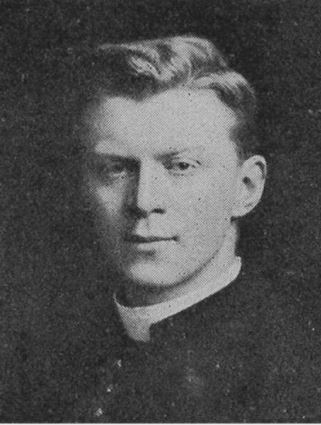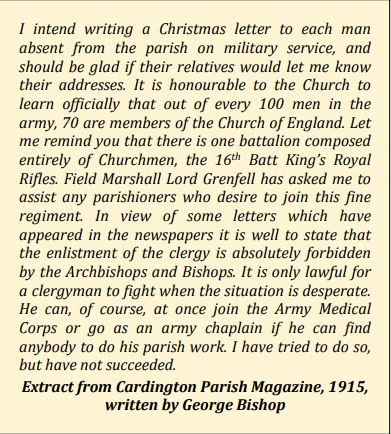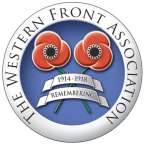Attached to 6th Battalion Northumberland Fusiliers

George Bernard Hamilton Bishop lived as a boy in Tredworth Road, Gloucester and attended King’s School. He went on to Culham College,Oxford, where he trained as a teacher and then on to Durham in preparation for ordination in the Church of England.
As a young man he was an enthusiastic Volunteer, serving with the Gloucester Brigade of the Royal Garrison Artillery, the Ox and Bucks Light Infantry and Durham University OTC, being a member of the Guard of Honour at the coronation of King George V. He also became a rowing coach and in 1911 was highly praised for his actions in saving a drowning rower after an accident on the River Wear.
After ordination, George was sent by the Church to study and report on the practices of the Russian Orthodox Church, and on his return he published books on the subject. He became vicar
at Cardington and in July 1917, after many attempts, he finally succeeded in being appointed Chaplain 4th Class with the 6th Battalion, Northumberland Fusiliers.
On 27 May 1918 the battalion was in trenches at Concevreux, in a part of the line that was to be attacked in the opening move of the Third Battle of the Aisne. At 1am that morning the Germans put down an intensive bombardment of mixed high explosive and gas shells on the British lines.
George was in the trenches with his battalion, tending wounded and dying men and giving support to the terrified soldiers. At 3.45am the German attack went in and it swept through the British positions, outflanking the battalion and attacking them from the rear. The Northumberlands’ losses were devastating with 27 officers and 632 men becoming casualties. George was among them, killed during the barrage by a high explosive shell. He was 34 years of age.
His body was never identified and he is commemorated by the CWGC on the Soissons Memorial in France. His name can also be found in Gloucester at The King’s School, in Gloucester Park, in the cathedral, at St Pauls’ Church, Stroud Road, and on the Gloucester YMCA memorial. Outside the city, he is also commemorated on memorials at his universities, at St James’ Church, Cardington and the RAChD memorial at Aldershot Garrison church.

